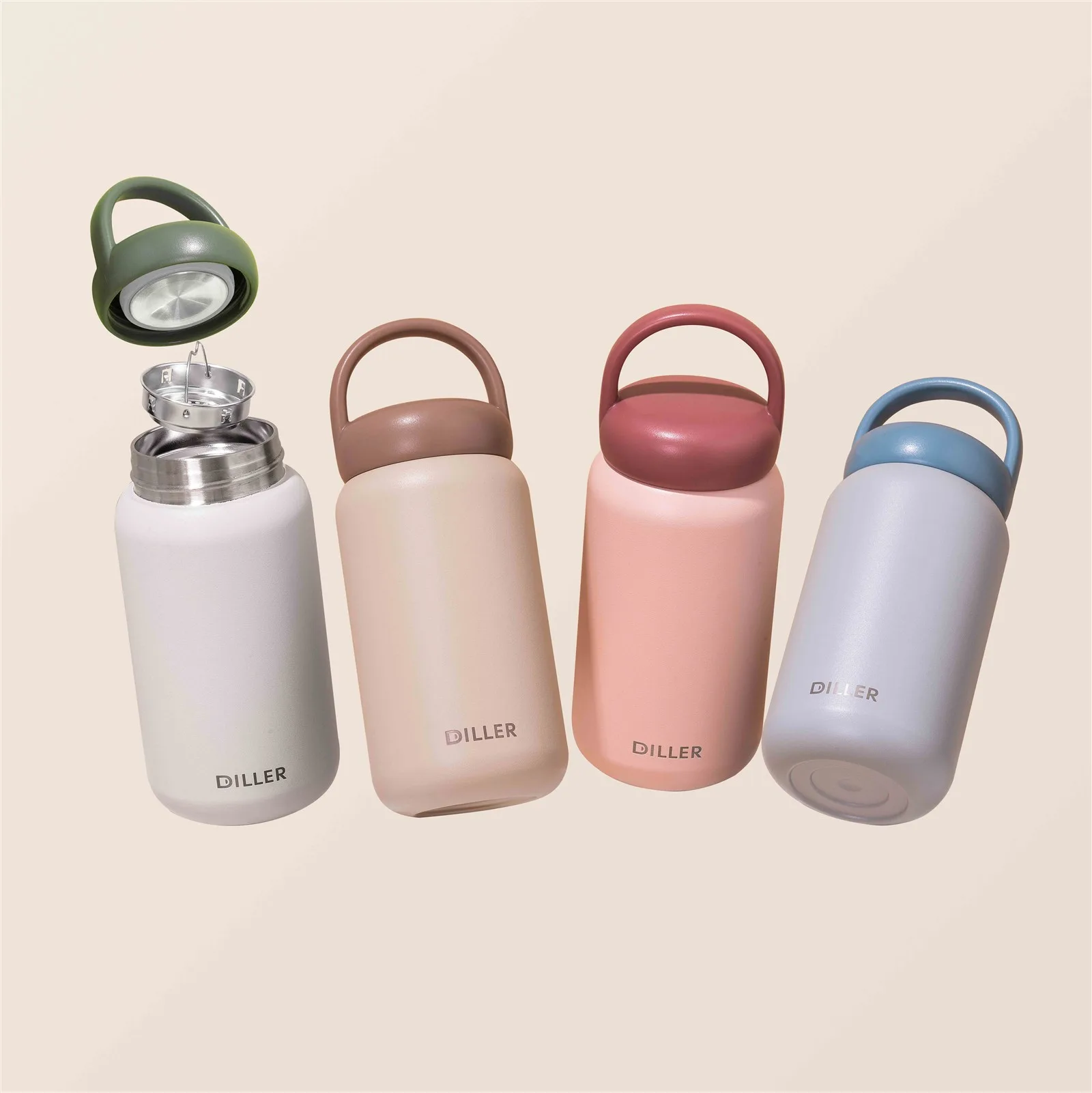Geïsoleerde bekers van roestvrij staal, als onmisbare dagelijkse benodigdheden in het dagelijks leven, hebben een aanzienlijke impact op de effectiviteit van isolatie, duurzaamheid en gezondheid en veiligheid vanwege hun materiaalkeuze. Momenteel omvatten de gangbare materialen voor isolatiebekers van roestvrij staal op de markt voornamelijk 304 roestvrij staal, 316 roestvrij staal en 316L roestvrij staal. Hieronder worden isolatiebekers van roestvrij staal van verschillende materialen vergeleken vanuit het perspectief van voor- en nadelen.
Roestvrij staal 304 is een veelgebruikt chroomnikkelroestvrij staal met een uitstekende corrosiebestendigheid, hittebestendigheid, hoge sterkte en goede prestaties bij lage temperaturen.
De chemische samenstelling van roestvrij staal 304 omvat voornamelijk elementen zoals ijzer, chroom, nikkel, koolstof, silicium, mangaan, fosfor, zwavel, enz. Het gehalte aan chroom en nikkel is relatief hoog, respectievelijk 18% en 8%, waardoor roestvrij staal 304 een hoge corrosiebestendigheid heeft in oxiderende en zure media. Bovendien heeft roestvrij staal 304 ook een goede hittebestendigheid en kan het stabiele prestaties behouden bij hoge temperaturen. Bovendien heeft roestvrij staal 304 ook een hoge sterkte en goede prestaties bij lage temperaturen, waardoor uitstekende prestaties kunnen worden behouden in omgevingen met lage temperaturen.
Roestvrij staal 304 wordt veel gebruikt in verschillende sectoren, zoals voedselcontainers, medische apparatuur, chemische apparatuur, apparatuur voor milieubescherming, bouwconstructies, enz. Het kan worden gebruikt voor het maken van serviesgoed, keukengerei, medische apparatuur, chemische apparatuur, auto-onderdelen, bouwmaterialen en andere producten.
Opgemerkt dient te worden dat hoewel 304 roestvrij staal een hoge corrosiebestendigheid en stabiliteit heeft, het nog steeds noodzakelijk is om langdurig contact met corrosieve stoffen zoals sterke zuren en alkaliën te vermijden tijdens gebruik om de uitstekende eigenschappen te behouden. Ondertussen, vanwege de hoge kosten van 304 roestvrij staal, moet er een balans worden overwogen tussen economische kosten en prestaties bij het gebruik ervan.
Roestvrij staal 316 is een type roestvrij staal dat molybdeen bevat, wat een hogere corrosiebestendigheid en sterkte heeft.
De chemische samenstelling van roestvrij staal 316 omvat voornamelijk elementen zoals ijzer, chroom, nikkel, koolstof, silicium, mangaan, fosfor, zwavel, enz. Daaronder is het gehalte aan chroom en nikkel relatief hoog, respectievelijk 16% en 10%, terwijl het een bepaalde hoeveelheid molybdeenelement bevat, waardoor roestvrij staal 316 een hogere corrosiebestendigheid heeft in oxiderende en zure media. Bovendien heeft roestvrij staal 316 ook een hoge sterkte en goede prestaties bij lage temperaturen, die goede prestaties kunnen behouden in omgevingen met een hoge sterkte en hoge corrosiebestendigheid.
Roestvrij staal 316 wordt veel gebruikt in verschillende sectoren, zoals medische apparatuur, chemische apparatuur, apparatuur voor milieubescherming, voedselcontainers, enz. Het kan worden gebruikt voor de productie van producten zoals medische apparatuur, chemische apparatuur, voedselcontainers, auto-onderdelen en bouwmaterialen.
Opgemerkt dient te worden dat hoewel 316 roestvrij staal een hoge corrosiebestendigheid en stabiliteit heeft, het nog steeds noodzakelijk is om langdurig contact met corrosieve stoffen zoals sterke zuren en alkaliën te vermijden tijdens gebruik om de uitstekende eigenschappen te behouden. Ondertussen, vanwege de hoge kosten van 316 roestvrij staal, moet er een balans worden overwogen tussen economische kosten en prestaties bij het gebruik ervan.
De belangrijkste verschillen tussen roestvrij staal 316 en roestvrij staal 316L zijn als volgt:
1. Koolstofgehalte: Het koolstofgehalte van roestvrij staal 316L is lager dan dat van roestvrij staal 316; het eerste is doorgaans minder dan 0,03% en het laatste is doorgaans minder dan 0,08%.
2. Chroomgehalte: Het chroomgehalte van roestvrij staal 316L is hoger dan dat van roestvrij staal 316. Het chroomgehalte van roestvrij staal 316L ligt doorgaans boven de 16% en het chroomgehalte van roestvrij staal 316L ligt doorgaans boven de 17%.
3. Corrosiebestendigheid: Door het lage koolstofgehalte van roestvrij staal 316L is de corrosiebestendigheid beter dan die van roestvrij staal 316.
4. Sterkte en hardheid: Door het lage koolstofgehalte en het hoge chroomgehalte van roestvrij staal 316L zijn de sterkte en hardheid hoger dan die van roestvrij staal 316.
5. Toepassingsgebied: 316 roestvrij staal is geschikt voor een aantal gewone roestvrijstalen producten, zoals serviesgoed, keukengerei, enz.; 316L roestvrij staal is geschikt voor toepassingen met een hoge vraag, zoals medische apparatuur en chemische apparatuur.
Over het algemeen heeft roestvrij staal 316L een betere corrosiebestendigheid en sterkte vergeleken met roestvrij staal 316. Bovendien zijn de toepassingsgebieden ervan uitgebreider.


